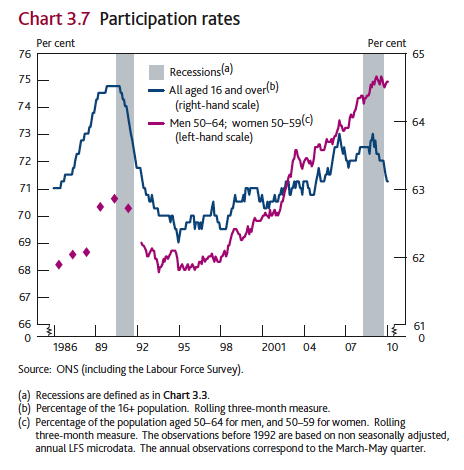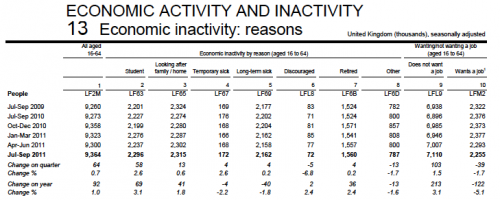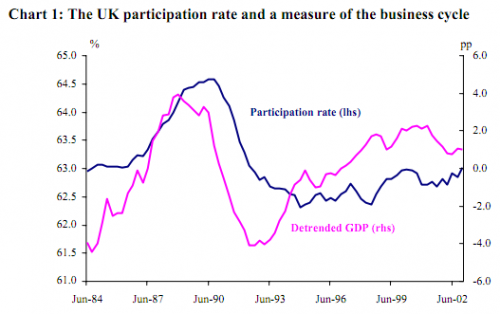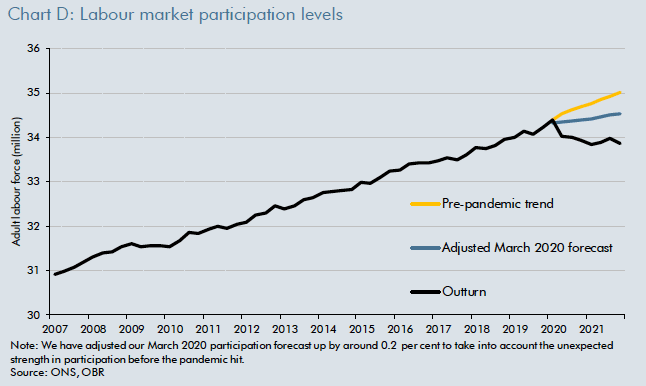Definition of Participation Rate. The participation rate is the number of people working or actively seeking work as a % of the working population (16-65).
The participation rate is similar to the concept of being ‘economically active’. If a person drops out of the labour market, they are considered economically inactive and no longer participating.

Why People May Drop out of Labour Force

- Full Time Education –
- Sickness or disability allowance means unable to work.
- Early retirement. e.g. have good private pension so take early retirement.
- Stay at home to look after children.
- Discouraged
Why Participation Rate may Fall in a Recession.

Source: participation rates at Bank of England pdf
A rise in unemployment doesn’t mean the participation rate has to fall. Because, if you are unemployed (i.e. actively seeking work) then you are still participating. However, in a recession the participation rate often falls. This is because:
- Long term unemployed may become disillusioned and leave the labour market (e.g. move onto non-unemployment benefits like sickness benefit.
- Full time education may look more attractive than a saturated job market.
- Mothers may stay at home for longer rather than struggle to find a job and pay for child care.
Participation rate in UK
The above graph shows that the participation rate fell after the 1991 recession. There has also been a fall in the participation rate in 2009. However, so far, the fall in the participation rate has been of a smaller magnitude. This is partly because of a rise in the participation rate in the age group 55+. Perhaps older workers are less willing to retire early but are taking more opportunity to keep working – perhaps because of fears over future pension provision.
Impact of covid on labour market participation

A striking feature of Covid and the shift to working from home is that it caused many people to re-evaluate their work-life balance. It has led to an unexpected fall in labour market participation, especially amongst older workers. The biggest rise in inactivity rates came from the age-group 50-64 with long-term sickness and early retirement a significant factor. (See: Why are workers quitting their job post Covid?)
Voluntary unemployment and participation rate
If someone is voluntarily unemployed, they are generally considered to be not actively seeking work. Therefore, they could be considered economically inactive. However, it depends how voluntary unemployment is classified and measured. Some people may prefer to remain on benefits than take a low paid job, therefore they could be classified as ‘voluntary unemployed’. However, if they are still actively seeking a higher paid job, they may still be viewed as participating in the labour market. This is a potential grey area, which used to lead to much discussion when agreeing on market scheme for Edexcel Paper on Labour markets.
Related

2 thoughts on “Participation Rate”
Comments are closed.